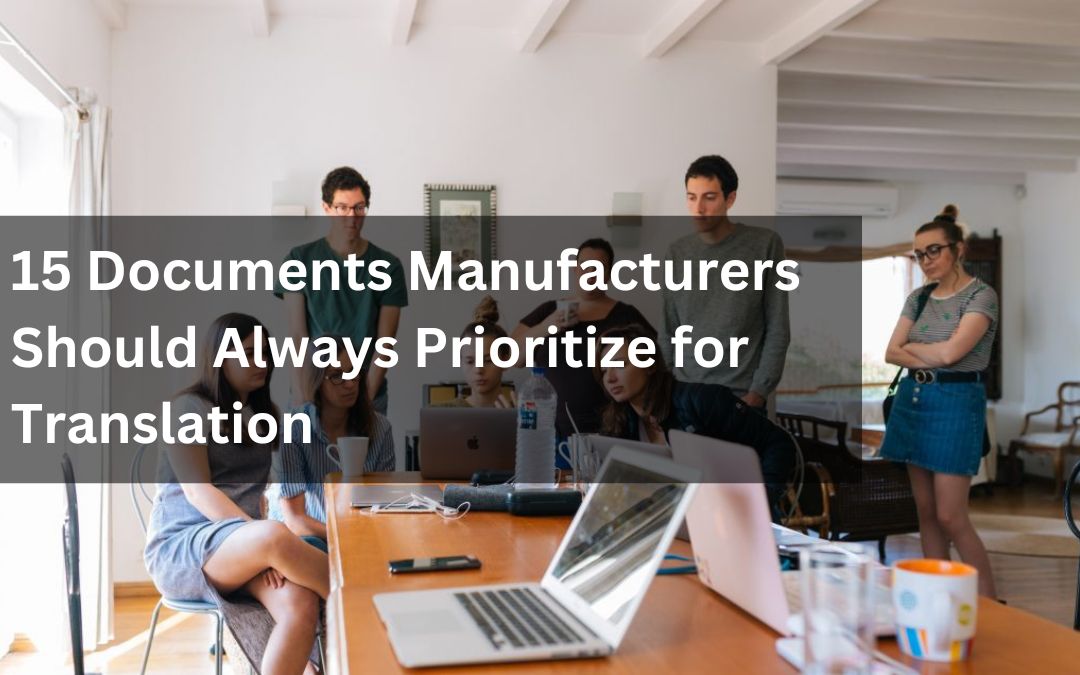In today’s globalized business landscape, manufacturers are no longer confined to local markets. As they expand their reach across borders, the need for clear and accurate communication becomes paramount. This is where manufacturing translation comes into play. Ensuring that essential documents are translated accurately can be the difference between successful global operations and costly misunderstandings. Let’s delve into the 15 documents that manufacturers should always prioritize for translation.
1. Product Manuals: Arguably the most crucial document for manufacturing translation, product manuals provide end-users with instructions on product usage, maintenance, and safety. Ensuring these are translated accurately guarantees that consumers worldwide can use the product safely and effectively.
2. Safety Data Sheets (SDS): These documents contain information about the properties of specific substances, including potential hazards and safety precautions. Manufacturing translation of SDS is vital to ensure worker safety in global facilities and compliance with international regulations.
3. Technical Specifications: When dealing with machinery, equipment, or complex products, technical specifications outline the product’s design, functionality, and standards. Accurate manufacturing translation ensures that global teams and partners have a clear understanding of product details.
4. Quality Assurance Documents: Quality is paramount in manufacturing. Translating quality assurance protocols and checklists ensures that global production units maintain consistent quality standards.
5. Regulatory Compliance Documents: Different countries have varying regulations for products. Manufacturing translation of compliance documents ensures that products meet the specific standards and regulations of each target market.
6. Contracts and Agreements: Whether it’s with suppliers, distributors, or partners, contracts outline the terms of business engagements. Manufacturing translation of these documents guarantees clarity and mutual understanding in international dealings.
7. Training Materials: For manufacturers with facilities in multiple countries, translating training materials ensures that all employees, regardless of location, receive consistent training, enhancing productivity and safety.
8. Marketing Materials: Brochures, catalogs, and promotional materials require manufacturing translation to effectively market products in different regions, catering to local cultures and preferences.
9. Labels and Packaging: Accurate manufacturing translation of labels ensures that consumers receive essential information about the product, including usage instructions, ingredients, and safety warnings, in their native language.
10. Patent Applications: To protect intellectual property globally, manufacturers should prioritize the manufacturing translation of patent applications, ensuring they are accurately represented in every jurisdiction.
11. Internal Communication: Newsletters, memos, and other internal communications should undergo manufacturing translation to ensure that all employees, regardless of their location, are aligned with the company’s goals and updates.
12. Customer Feedback Forms: Understanding the needs and feedback of global customers is crucial. Translated feedback forms allow manufacturers to gather insights from diverse markets.
13. Warranty Documents: For products sold internationally, warranty terms and conditions should undergo manufacturing translation to ensure clarity and avoid potential disputes.
14. Website Content: In the digital age, a manufacturer’s website is often the first point of contact for potential clients and partners. Manufacturing translation of website content ensures that it caters to a global audience.
15. Financial Reports: For manufacturers with stakeholders in different countries, translating financial reports ensures transparency and clarity in financial matters.
Conclusion
Manufacturing translation is not just a process; it’s a strategic move for manufacturers aiming for global success. By ensuring that these 15 essential documents are accurately translated, manufacturers can navigate the complexities of international markets, ensuring clarity in communication, compliance with regulations, and a consistent brand image. In the vast world of global manufacturing, where precision and clarity are paramount, manufacturing translation stands out as a vital tool, bridging gaps and building connections.

